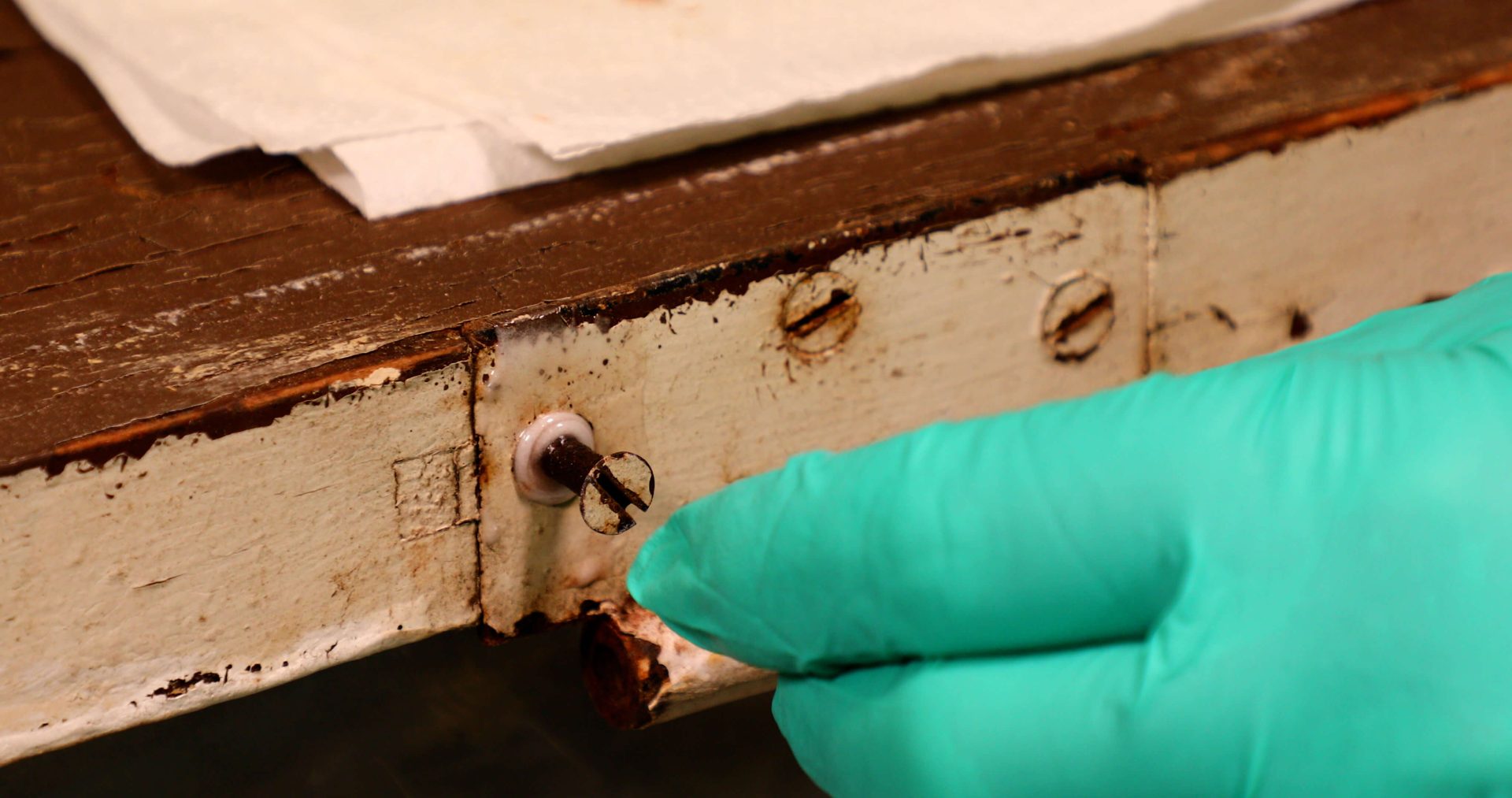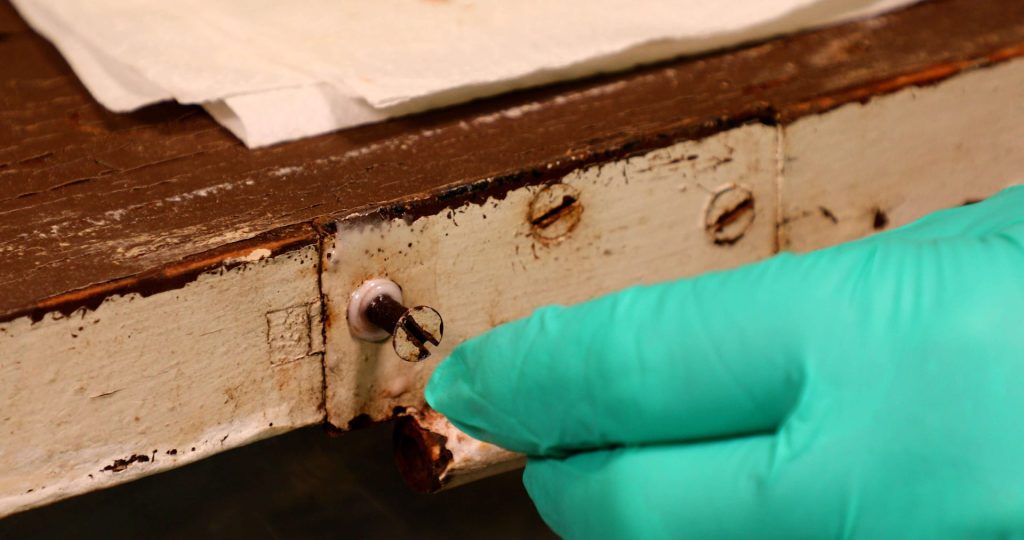One Rotted Antique Door | Pt. 3
Four Common Repairs


Over many years of use, one of the screws in the door that held the top hinge plate had come loose. The screw had partially stripped the wood, so there was no longer any wood for the screws to hold onto.
I removed the screw and wiped it with a clean paper towel to remove any loose rust or debris. Then, to prepare the screw for epoxy, I sprayed it with cooking spray. The spray prevents the epoxy from sticking to the screw, so you could back the screw out if you needed to later.
For this repair, I chose our G/5® Five-Minute Adhesive. G/5 cures quickly, so you must work quickly, but it has excellent adhesion to wood. I added a little 406 Colloidal Silica, thickening the mix to a peanut butter consistency so that the epoxy did not drain out of the screw hole while curing.
I applied the mixture to the threads of the screw to ensure the epoxy didn’t trap air between the grooves. Using a mixing stick, I forced the epoxy from the mix into the screw hole. Then I took my screw and ran it in and out of the hole a few times to work the epoxy down the length of the hole. Sometimes, you can get an air pocket stuck in the bottom of the hole, which helps disrupt that, allowing the epoxy to work its way to the bottom. Alternatively, I could have used a syringe to inject the epoxy from the bottom of the hole outward.
Once satisfied the hole was sufficiently coated, I applied a little more epoxy to the threads and inserted the screw back into the hole. I made sure the head was flush with the hinge plate. Then I removed the excess squeeze out, so I could back our screw out later if I wanted.